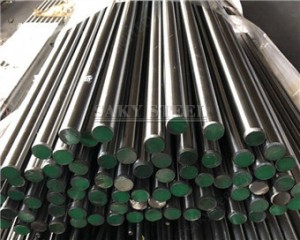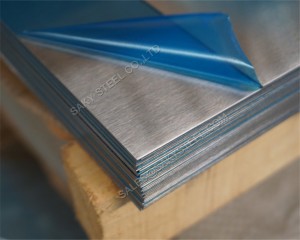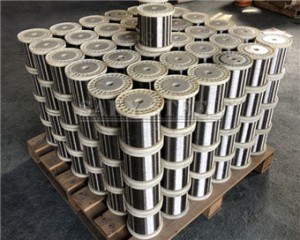Is Stainless Steel Magnetic?
Introduction
Stainless steel is widely known for its corrosion resistance and sleek appearance, but a commonly asked question is: Is stainless steel magnetic? The answer is not straightforward—it depends on the type and crystal structure of the stainless steel. In this guide, we’ll explore the magnetic properties of different stainless steel grades, clarify misconceptions, and help engineers, buyers, and DIYers make informed choices.
What Makes a Material Magnetic?
Before diving into stainless steel, let’s review what determines whether a material is magnetic. A material is magnetic if it can be attracted to a magnet or magnetized. This occurs when the material has unpaired electrons and a crystalline structure that allows for magnetic domains to align.
Materials are classified into three magnetic types:
-
Ferromagnetic (strongly magnetic)
-
Paramagnetic (weakly magnetic)
-
Diamagnetic (non-magnetic)
The Structure of Stainless Steel: Ferrite, Austenite, Martensite
Stainless steel is an iron alloy containing chromium and sometimes nickel, molybdenum, and other elements. Its magnetic property depends on its microstructure, which falls into the following categories:
1. Austenitic Stainless Steel (Non-Magnetic or Weakly Magnetic)
-
Common Grades: 304, 316, 310, 321
-
Structure: Face-Centered Cubic (FCC)
-
Magnetic?: Typically non-magnetic, but cold working (e.g., bending, machining) can induce slight magnetism.
Austenitic stainless steels are the most common types used in kitchenware, piping, and medical instruments due to their excellent corrosion resistance and ductility.
2. Ferritic Stainless Steel (Magnetic)
-
Common Grades: 430, 409, 446
-
Structure: Body-Centered Cubic (BCC)
-
Magnetic?: Yes, ferritic steels are magnetic.
They are typically used in automotive parts, home appliances, and industrial applications where moderate corrosion resistance is sufficient.
3. Martensitic Stainless Steel (Magnetic)
-
Common Grades: 410, 420, 440C
-
Structure: Body-Centered Tetragonal (BCT)
-
Magnetic?: Yes, these are strongly magnetic.
Martensitic steels are known for their hardness and are commonly used in knives, cutting tools, and turbine components.
Is 304 or 316 Stainless Steel Magnetic?
This is one of the most searched queries. Here’s a quick comparison:
| Grade | Type | Magnetic in Annealed Condition? | Magnetic After Cold Work? |
|---|---|---|---|
| 304 | Austenitic | No | Slightly |
| 316 | Austenitic | No | Slightly |
| 430 | Ferritic | Yes | Yes |
| 410 | Martensitic | Yes | Yes |
So, if you are looking for non-magnetic stainless steel, 304 and 316 are your best bets—especially in their annealed condition.
Why Does It Matter If Stainless Steel Is Magnetic?
Understanding whether a stainless steel grade is magnetic is important for:
-
Food processing equipment: where magnetism could interfere with machinery.
-
Medical devices: such as MRI machines, where non-magnetic materials are mandatory.
-
Consumer appliances: for compatibility with magnetic attachments.
-
Industrial fabrication: where weldability or machining behavior changes based on structure.
How to Test Stainless Steel Magnetism
To check if stainless steel is magnetic:
-
Use a magnet – Stick it to the surface. If it sticks firmly, it’s magnetic.
-
Test different areas – Welded or cold-worked regions may show more magnetism.
-
Verify the grade – Sometimes, low-cost alternatives are used without labeling.
Non-magnetic stainless steel wire ropes Magnetic testing
We conducted non-magnetic testing on stainless steel wire ropes of various diameters and materials to ensure compliance with low-magnetic permeability standards required in critical applications such as MRI rooms, military use, and precision instrumentation.
This video demonstration showcases our magnetic testing process, verifying that our ropes—made from grades such as 316L and 304 stainless steel—maintain non-magnetic properties even after forming and manufacturing.
Can Stainless Steel Become Magnetic Over Time?
Yes. Cold working (bending, forming, machining) can change the microstructure of austenitic stainless steel and introduce ferromagnetic properties. This doesn’t mean the material has changed grade—it simply means the surface has become slightly magnetic.
Conclusion
So, is stainless steel magnetic? The answer is: Some are, some aren’t. It depends on the grade and treatment.
-
Austenitic (304, 316): Non-magnetic in annealed form, slightly magnetic after cold work.
-
Ferritic (430) and Martensitic (410, 420): Magnetic.
When choosing a stainless steel for your application, consider both its corrosion resistance and magnetic properties. If non-magnetism is crucial, confirm with your supplier or test the material directly.


